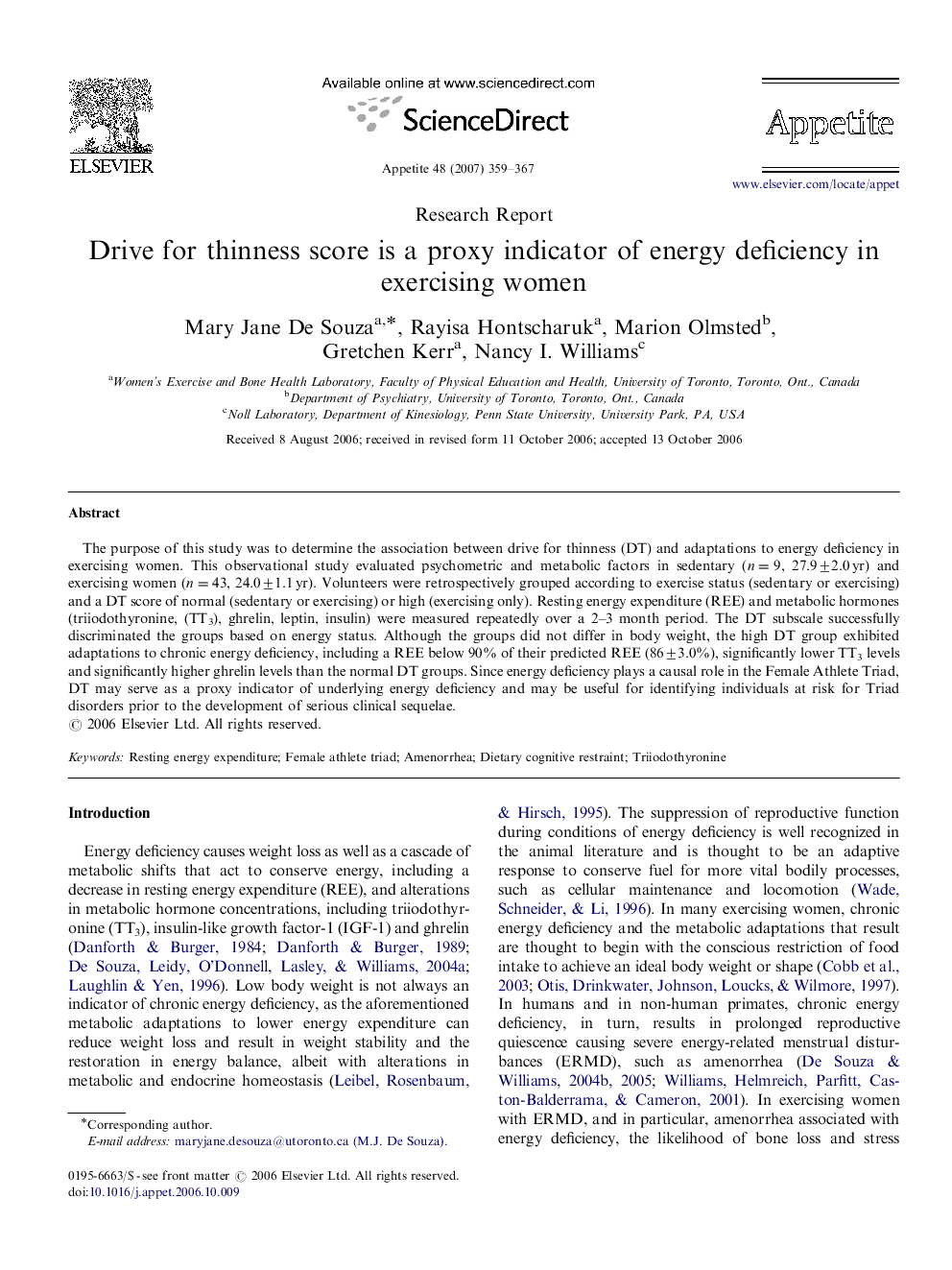| Article ID | Journal | Published Year | Pages | File Type |
|---|---|---|---|---|
| 941702 | Appetite | 2007 | 9 Pages |
The purpose of this study was to determine the association between drive for thinness (DT) and adaptations to energy deficiency in exercising women. This observational study evaluated psychometric and metabolic factors in sedentary (n=9n=9, 27.9±2.0 yr) and exercising women (n=43n=43, 24.0±1.1 yr). Volunteers were retrospectively grouped according to exercise status (sedentary or exercising) and a DT score of normal (sedentary or exercising) or high (exercising only). Resting energy expenditure (REE) and metabolic hormones (triiodothyronine, (TT3), ghrelin, leptin, insulin) were measured repeatedly over a 2–3 month period. The DT subscale successfully discriminated the groups based on energy status. Although the groups did not differ in body weight, the high DT group exhibited adaptations to chronic energy deficiency, including a REE below 90% of their predicted REE (86±3.0%), significantly lower TT3 levels and significantly higher ghrelin levels than the normal DT groups. Since energy deficiency plays a causal role in the Female Athlete Triad, DT may serve as a proxy indicator of underlying energy deficiency and may be useful for identifying individuals at risk for Triad disorders prior to the development of serious clinical sequelae.
